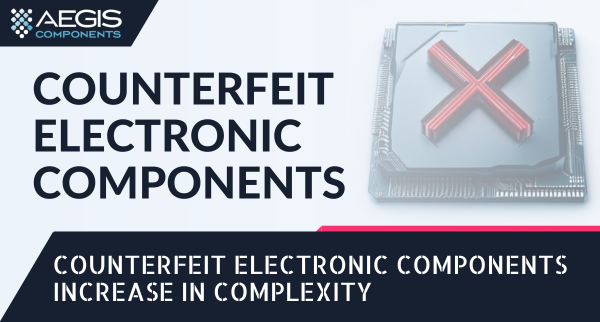
Counterfeit electronic components have evolved beyond crude imitations, now encompassing a range of deceptive tactics to pass off as genuine components. A counterfeit is defined as an imitation intended to fraudulently deceive as genuine for profit. In the component market, counterfeits come in various forms:
The electronic component counterfeiting landscape has grown more intricate, encompassing impeccable visual appearances and seemingly unblemished documentation trails. We have moved beyond fraudulent copies of manufacturers’ logos and IC packages with no die inside. Counterfeiters now have sophisticated operations, utilizing impeccable component finishes, as well as seemingly perfect paperwork trails, as the potential gains for counterfeiters are enormous.
While no one likes to be fooled by counterfeit products of any kind, their presence in the component market poses significant risks in vital applications like aviation, defense, and medical devices. Relying on unverified components could lead to catastrophic failures. Some examples of when counterfeiting may lead to compromised long-term reliability include:
Identifying Counterfeit Electronic Components
Electronic component testing like AS6081 can detect counterfeit or low-quality products and protect your supply chain in a number of ways.
The AS6081 standard provides a comprehensive methodology for detecting counterfeit and low-quality electronic components. By following the AS6081 standard, you can help to protect your supply chain from counterfeit and low-quality components.
Safeguarding Your Supply Chain
While the industry may lack a fail-proof solution, buyers of electronic components are still capable of combating counterfeit components in their supply chain. The most efficient way of combating counterfeits is through a comprehensive sourcing structure. Vetting and analyzing your sources can reveal indications of questionable transactions. For instance, a newly established company offering a large quantity of a scarce product must be scrutinized and evaluated for authenticity. Additionally, buyers should leave margin in deals for testing services to ensure that the parts receive a thorough testing and evaluation process.
At Aegis Components, our sourcing structure has allowed us to weather the storms of uncertainty in the electronics industry. Our network of suppliers has received over a decade of scrutiny and evaluation. Our strategically placed locations around the world allow us to visit and audit the headquarters of a company before making a purchasing decision. Additionally, Aegis Components has partners with reputable test houses to provide the appropriate inspection and testing of a part before delivering it to our customers. Our thorough approach to procurement combined with our exceptional logistics structure has allowed us to combat counterfeit electronic components, and rival the larger distributors in our industry.
Add Aegis Components to your approved vendor list, and let our team help you make strategic and well-informed purchasing decisions.
Aegis Components provides electronic and electrical components from verified suppliers to ensure that the quality you expect is delivered every time.
Fill up the form and our team will get back to you within 24 hours.